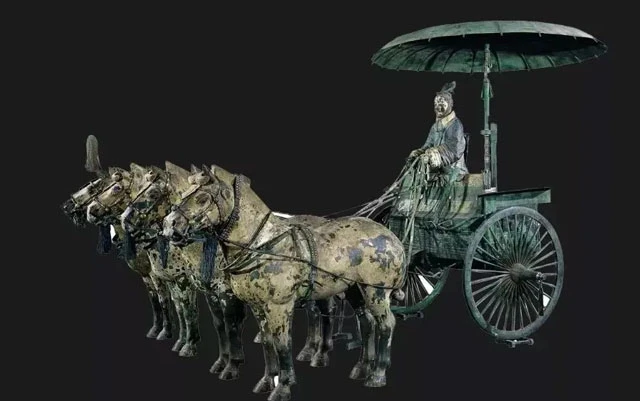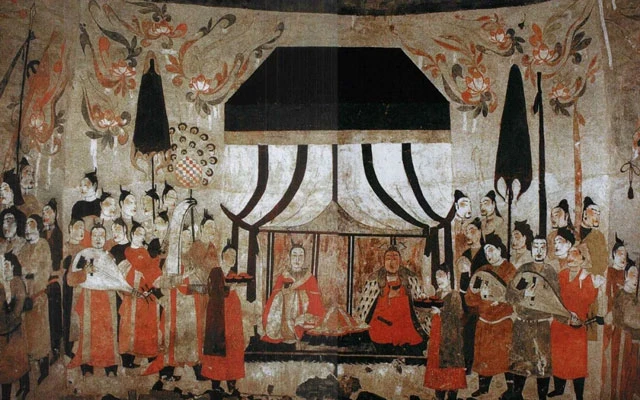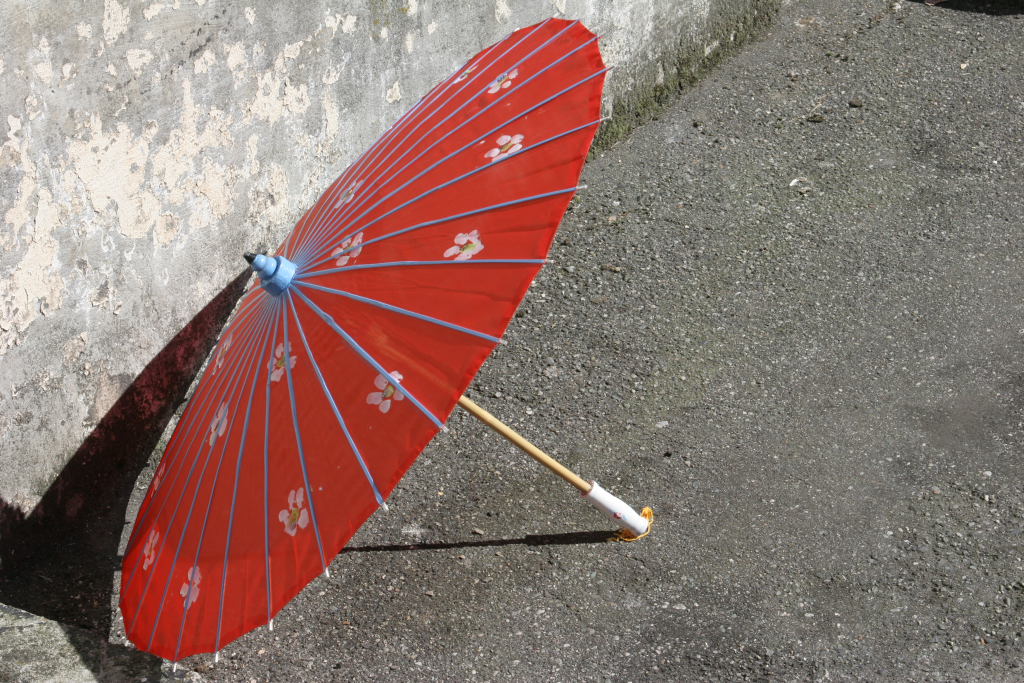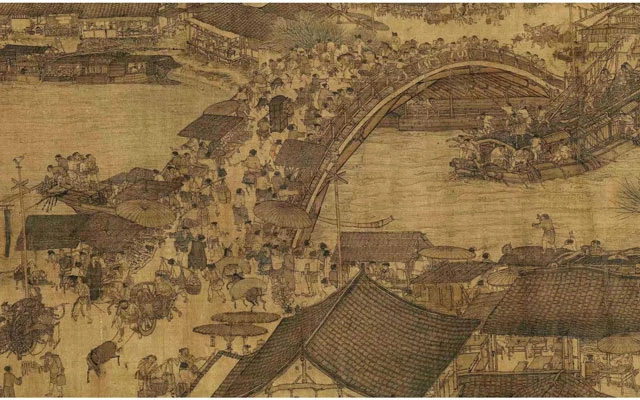Around 3500 years ago, Lu Ban, a pioneering Chinese inventor, observed children using large lotus leaves to shield themselves from the rain. Inspired by this simple yet effective solution, he set out to create a more durable and practical rain cover. His invention, the ancient Chinese umbrella, featured a flexible frame draped with cloth, revolutionizing protection from the elements. This early design laid the foundation for the modern umbrellas we use today, blending ingenuity with nature’s simplicity.

Original Design
The Chinese umbrella’s initial design required a lot of work and money. It was made of silk, a priceless material, and when it was mixed with the elaborate craftsmanship of ancient Chinese artists, the result was a luxury good that was only available to the affluent. Red and yellow umbrellas were used by royal families, and blue umbrellas, by the common people.
Paper Umbrellas Replacing Silk Ones
Around the first century BC, paper began to replace silk on umbrellas, making them more affordable as a fashion accessory for wealthy women. Designers applied a protective layer of oil to the paper, increasing its water resistance and keeping the owner dry in the rain.

The regions of Fujian and Hunan are recognised for their beautiful craftsmanship and vivid patterns, and they produce the best oil paper umbrellas. These umbrellas have paper coverings that are hand-painted with elaborate scenes of flowers, birds, and landscapes, and their bamboo frames are treated to ward off mould and insects. Every umbrella has an oil coating for aesthetics and longevity. For instance, the Fuzhou paper umbrella is made through more than 80 steps and uses five-year-old bamboo for strength and suppleness. A premium, useful, and aesthetically pleasing finish is guaranteed when pure paint and tung oil are applied to the refined cotton paper.

By the third century AD, the ancient Chinese had developed novel features such as extended shafts, foldable mechanics, and customized umbrellas for carriages and horse riders.
Umbrellas Elsewhere in the World
The intricate design of umbrellas evolved into a symbol of pride and heritage, enthralling not only China but even the Royalty in Burma, Siam, and Korea. Umbrellas, on the other hand, became deeply ingrained in Japanese culture. Umbrellas were not only useful in Japan but also a beauty must-have, protecting women’s skin from the sun. In a culture that valued pale skin as a measure of beauty, umbrellas became an essential component of daily life and a representation of aesthetic values.
As traders traveled the Silk Road, they brought many ancient Chinese fashions and inventions to new countries. When Europe emerged from the Dark Ages, it eagerly accepted foreign and unfamiliar products. Among these were the brilliant Chinese umbrellas, which swiftly captured European fashion trends with their distinctive and colorful designs.
Chinese Umbrellas in Fashion Now
Today, Chinese umbrellas are made of a range of materials such as oil paper, cotton, silk, plastic film, and nylon, and they are utilized for both rain protection and sun shelter. They have either straight or foldable frames. Among the most magnificent are Hangzhou’s silk-covered umbrellas, which are truly pieces of art. These parasols, which are frequently decorated with beautiful landscape prints and placed on bamboo frames, are as fragile as a cicada’s wing. They measure about 53 centimeters (20 inches) in length and weigh only 250 grams (8.8 ounces), making them both practical and attractive souvenirs for tourists. Locally, these silk parasols are an essential part of women’s sun protection apparel. Umbrellas and parasols play an important role in performance arts, such as as acrobatics, where a wire-walker might use a parasol as a balancing tool on the tightrope.
Traditional Chinese Umbrella, Chinese Identity and Art
In China, umbrellas have been a symbol of status and power for centuries. Their use dates back to the Qin Dynasty (221-206 BCE), where they were used to shield people from the sun, rain, and snow. Umbrellas are closely tied to royalty and are often featured in paintings of emperors and weddings. Traditional umbrella colors, such as red, yellow, green, blue, white, and black, reflect various Chinese dynasties. For instance, the first emperor used white umbrellas with red and yellow tassels. These colorful umbrellas not only served a practical purpose but also represented different dynastic periods.

Umbrellas were previously considered a luxury reserved for the wealthy and powerful, as seen by different creative renderings and paintings from the Song Dynasty (960–1279). The earliest known artwork depicting an umbrella, from approximately 1100 AD, is housed in Beijing’s Qianlong Palace. Umbrellas were not only useful things but also status symbols, serving as both rain protection and a marker of social standing. According to Ugo Carrega’s autobiography from 1638, the French used umbrellas to show devotion to their superior.
References
- https://www.chinahighlights.com/travelguide/culture/paper-umbrella.htm
- https://www.absolutnetwork.com/the-influential-role-of-traditional-umbrellas-in-chinese-art/
- https://www.coolaboo.com/world-history/ancient-china/ancient-china-umbrella/





